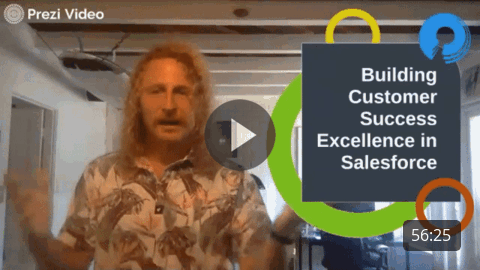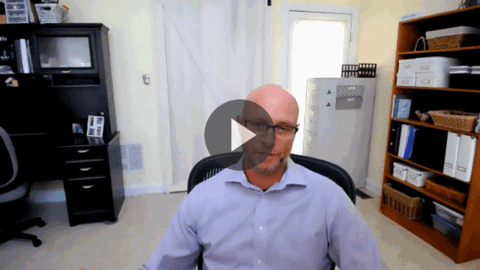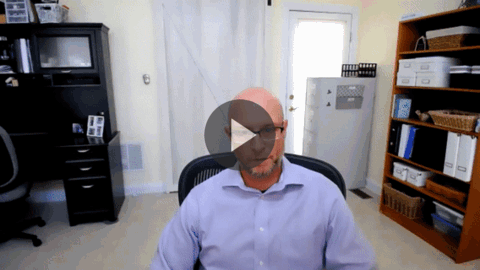Building Customer Success Excellence in Salesforce: Panel Takeaways
Building Customer Success Excellence in Salesforce: Panel Takeaways
As a Customer Success leader, you’re all too familiar with feeling like the forgotten child of the organization anytime there’s a RevOps discussion. Everyone pays attention to Marketing and Sales, but the conversation seems to end once a prospect becomes a customer. After a while Customer Success can start to feel like the forgotten child of RevOps.
I think that’s just plain wrong.
How well will a company do if it’s hemorrhaging customers month after month? Exactly. Customer Success is a critical part of growing a company and RevOps teams play a huge role in ensuring that the customer’s success is a key tenant of their processes and technology choices.
It’s this belief that inspired a recent OpFocus panel on Building Customer Success Functionality in Salesforce. Once a company gets serious about supporting CS, they face the uncertainty of how to do so. Do you need a third-party tool like Gainsight or should you provide support through Salesforce? If you do the latter, what can you even accomplish? Our panel set out to answer these questions.
Our all-star CS cast for this panel
- Jay Nathan, Chief Customer Officer at Higher Logic
- Joshua Lyons, Director of Customer Success at Infolock
- Bettina Fowler, VP of Client Operations at Higher Logic
- Mike Olender, Senior Consultant at OpFocus
How does Salesforce fit into your Customer Success strategy?
Are there any principles or best practices you lead with given your experience with Salesforce?
Salesforce should be the single source of truth for your organization. As long as this is the case, you can leverage it in your Customer Success strategy. Think before doing so, or making any edits to your tech stack. Joshua suggests always considering the process you’re looking to improve. Starting with a well-defined process enables teams to understand where data should be created, stored, and shared across teams. With this understanding, the risk of creating a ton of noise and tech debt diminishes.
How do you position Salesforce as a tool to support your entire client journey?
Before you begin any new project, create alignment on what these processes are going to be. Don’t assume all data will live in Salesforce alone, decide where Salesforce starts and stops. You don’t need to bring every piece of data into Salesforce, but consider where resources are performing their work in the system and how new data will enable your resources to maximize the experience of your customers.
“The Saddest thing I’ve ever seen is Salesforce used purely as a pipeline management tool”
Jay Nathan, Chief Customer Officer at Higher Logic
It’s important to think about how you’re going to handle reporting and how the data goes back into Salesforce. Our very own David Carnes teaches a course on how to best ask yourself both “How” and “Why” you’re developing a new process before making changes. Understanding these points puts you in a better position to effectively bring information into Salesforce and create a 360º customer view.
Although you want to bring the right data into Salesforce, beware not to make it a data warehouse. Massive amounts of data make it difficult for end-users to access and report on and will drive up your costs significantly. Salesforce is best used when made simple for end-users to view and use the data. Michael Oleander, Sr. Consultant at OpFocus, suggests that building a data warehouse is a necessary activity for most companies. The warehouse enables teams to manage their data more efficiently and control their data storage and processing costs.
What lessons have you learned or pitfalls you’ve uncovered?
The more you use something, the more you’ll learn about how to use it properly and what actions cause issues and you should avoid. The panel discussed some of the top lessons and pitfalls they’ve learned in their years using it for CS functionality.
Considering Sales as the only user of Salesforce:
When Sales teams are considered the only users of the platform, you’ll find yourself creating functionality and fields that may not be useful for other teams. Sales may not pay a lot of attention to other teams using the system and break functionality as a result. What Bettina’s team did is establish Salesforce governance meetings with various team stakeholders about what fields and functionality must be added. A governance team like Bettina described is a best practice for organizations looking to maximize system-driven collaboration.
Creating Data Silos:
Bringing on a third-party tool is a good way to separate Customer Success functionality from Sales data but can sometimes create silos. When the Sales team is left to control Salesforce functionality, over time it can often become unrecognizable to the type of data shared in other areas. It becomes increasingly difficult to control your customer’s experience when the teams that support them are working with their unique perspective of the client. By breaking down the silos, teams can efficiently collect and leverage information without asking for the same information at every stage of the client’s journey.
Not establishing proper Governance:
Some teams receive a request and immediately act to address it without thinking about the long-term consequences. Putting some sort of governance structure in place ensures time is taken to evaluate potential changes.
Not starting with the end in mind:
You need to understand how the output data is being used and what the end state will look like. Without this knowledge, you’re unable to optimize the process and may take it in a direction that isn’t useful. Knowing the end state also prevents you from spending time on processes that aren’t important.
“I think it’s so important making sure as you grow as an organzaiton that you revisit how your pages are set up and what your layouts look like”
Bettina Fowler, VP of Client Operations at Higher Logic
Why choose Salesforce as a tool for Building Customer Success Functionality over something like Gainsight?
One of our panelists, Joshua Lyons at Infolock, is currently deciding if Salesforce or a Customer Success platform is right for his team. This situation is one that all fast-growing SaaS companies are likely to face at some point, or have already faced in the past.
He’s decided to go with Salesforce, mentioning that his team already has established processes well in advance of deciding to bring on a new platform. His team has an internal CS process playbook that outlines all the steps they take when interacting with customers. This enabled them to identify the gaps they needed to address when automating Customer Success processes. Having this mapped out made it easy to identify the fields, custom objects, and owners to bring this process to life in Salesforce.
“And the beauty is this data is available to everybody with a Salesforce license in our organization and they can see what we’ve captured.”
Joshua Lyons, Director of Customer Success at Infolock
Infolock is capturing and holding all the relevant information in one location throughout the sales cycle. At the end of the sales process, they’re implementing a CSM that maintains all this data and sets the Customer Success team up for onboarding.
Where does Salesforce stand up as an opportunity for people to leverage it in terms of Customer Success?
One of the main areas Salesforce shines is providing structure and automation around your processes. The platform takes some of the processes your team already does and automates the manual bits to save your team time and enable them to do more with their customers.
An example is onboarding, where Salesforce can automate things like emails and event triggers. Account health is another thing that can be tracked in Salesforce. The scoring can then drive triggers for specific actions that mitigate risks and identify expansion opportunities.
As mentioned, there are also areas that Salesforce is not the best fit. A big function is a data warehouse. Salesforce is very ill-equipped to serve as a data warehouse and using it in this way gets very expensive very quickly. Even Customer Success specific tools like Gainsight are also not meant to be your data warehouse. Think about all the systems that
Q&A:
How do we decide what teams should provide input on what the Customer Success journey looks like in Salesforce?
The panelists agree that members of most teams should be involved in deciding this process. Higher Logic brings together leaders in finance, product, sales, Customer Success, IT, and Engineering that meet once a week to discuss this topic. This clear communication ensures every team is on the same page.
During these discussions, it’s important to discuss the tools and platforms as well as the strategy and process side. If you’re building processes across systems, you need one standard across all teams. This governance prevents different definitions from being used and keeps data clean.
What Salesforce tools are available to analyze unused fields?
One tool that Mike recommends to all Customer Success leaders is FieldTrip. This gives you a sense of all the fields in place and how often they’re populated. Unfortunately, this is not a silver bullet for deciding what to keep. For example, a field may always be filled but never used; or a field may display as rarely filled but could just be new.
What Bettina did is hide certain fields her team did not think were needed then waited a week to see if anyone noticed. Since no one reached out and asked where these fields were, it validated their belief that they aren’t needed. Other legacy data that has been around for a long time but isn’t used can be difficult to move on from but is often the right decision.
How do these insights improve my Customer Success Process?
After hearing from this panel you’re thinking one of two things. Either you’re swamped with other projects and this is all too much to think about right now, or this is exactly the kickstart your Customer Success process needs. For those in the latter category, it’s best to start creating internal alignment as soon as possible. Bring in stakeholders from different departments and agree on what the CS process should look like from beginning to end.
If you’re looking to streamline the process, an outside advisor can help create internal alignment and offer guidance in mapping out Customer Success processes. My team has worked with a lot of teams like yours, helping SaaS organizations transform the customer journey. Reach out to a member of my team to discuss your growth goals and they’ll help identify the roadblocks holding you back.








